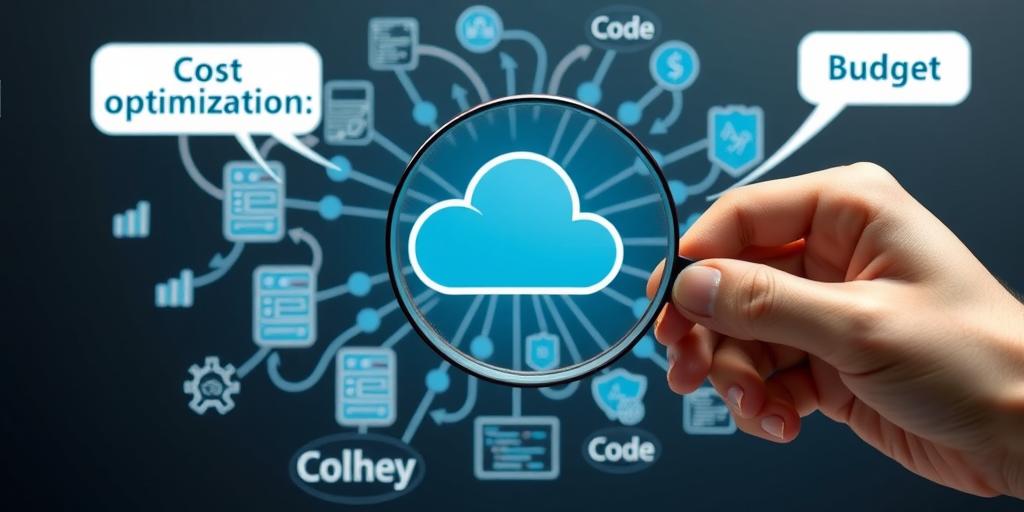Cloud computing has revolutionized the way businesses operate, offering unprecedented flexibility, scalability, and innovation. However, with this flexibility comes the need for careful cost management. Uncontrolled cloud costs can quickly escalate, impacting your bottom line. This is where effective cloud cost management strategies become crucial.
Understanding Cloud Costs
Before diving into budgeting strategies, it’s essential to understand the factors that contribute to your cloud costs.
Cost Drivers
Several key drivers influence your overall cloud expenditure. These include:
- Compute resources: The amount of processing power you use, such as virtual machines (VMs) or containers.
- Storage: The amount of data you store in the cloud, whether it’s block storage, object storage, or file storage.
- Networking: Data transfer between your cloud environment and the internet or other cloud resources.
- Databases: The type and size of databases you use, including relational databases, NoSQL databases, or managed databases.
- Software licenses: Costs associated with running software applications in the cloud.
Pricing Models
Cloud providers offer various pricing models, each with its own nuances:
- Pay-as-you-go: You pay only for the resources you use, making it ideal for unpredictable workloads.
- Reserved instances: You commit to using a certain amount of resources for a specific period, often resulting in significant discounts.
- Spot instances: You bid for unused compute capacity, offering the potential for substantial cost savings, but with the risk of instances being interrupted.
Budgeting Strategies
Developing a robust cloud budget is essential for controlling expenses and achieving your business objectives.
Setting a Budget
The first step is to establish a realistic budget based on your anticipated cloud usage. Consider factors such as:
- Current cloud usage: Analyze your existing cloud spending to understand your baseline.
- Projected growth: Estimate future cloud resource requirements based on business growth and anticipated workloads.
- Cost optimization goals: Set targets for reducing cloud costs through efficient resource utilization.
Cost Optimization Techniques
Once you have a budget in place, implement cost optimization techniques to control your cloud expenses:
Rightsizing Resources
Ensure you’re using the right size and type of virtual machines, databases, and other resources. Overprovisioning can lead to significant waste, while underprovisioning can cause performance issues.
Utilizing Reserved Instances
Commit to using reserved instances for predictable workloads, leveraging the cost savings they offer. This strategy is particularly beneficial for long-running applications or databases.
Leveraging Spot Instances
Consider using spot instances for less critical or flexible workloads. This can result in substantial cost savings, but you must be prepared for potential interruptions.
Auto-Scaling
Automate resource scaling based on demand to ensure optimal performance without overprovisioning. This allows you to dynamically adjust resources based on real-time usage patterns.
Monitoring and Analysis
Regularly monitor your cloud usage, identify areas of potential waste, and analyze cost trends. This provides valuable insights for optimizing your cloud environment.
Tools and Resources
Various tools and resources can aid in your cloud cost management efforts.
Cloud Cost Management Tools
Cloud providers offer a range of tools specifically designed for cost monitoring and optimization. Examples include:
- AWS Cost Explorer: Provides detailed insights into your AWS spending, allowing you to track costs by service, region, and time period.
- Azure Cost Management + Billing: Offers comprehensive cost analysis and management capabilities within the Azure platform.
- Google Cloud Billing & Cost Management: Helps you understand your Google Cloud costs and optimize spending across various services.
Cloud Cost Optimization Services
Specialized third-party services provide advanced cloud cost optimization capabilities:
- CloudHealth by VMware: Offers cloud cost management, governance, and security solutions across various cloud providers.
- CloudCheckr: Provides comprehensive cloud security, compliance, and cost optimization solutions.
- RightScale: Offers cloud management and automation tools, including cost optimization features.
Best Practices
Implementing these best practices will significantly contribute to effective cloud cost management:
Regular Monitoring and Analysis
Continuously monitor your cloud usage, identify potential cost savings, and analyze cost trends. This proactive approach ensures you’re staying on top of your cloud expenses.
Automation and Optimization
Automate resource scaling, shut down unused resources, and implement other cost optimization techniques to streamline your cloud cost management processes.
Collaboration and Communication
Foster collaboration between your IT team, finance department, and business stakeholders to ensure everyone understands the importance of cloud cost management and works towards achieving cost optimization goals.
Key Takeaways
Effective cloud cost management is essential for maximizing the value of your cloud investments. By understanding cost drivers, implementing budgeting strategies, and leveraging available tools and resources, you can control cloud expenses and achieve significant cost savings.
Future Trends
Cloud cost management is an evolving field, with new tools and technologies emerging regularly. Here are some future trends to watch:
- AI-powered cost optimization: Artificial intelligence (AI) is increasingly used to automate cost optimization tasks, identify potential savings, and recommend adjustments.
- Serverless computing: Serverless computing models, such as AWS Lambda and Azure Functions, offer pay-per-execution pricing, which can be more cost-effective for certain workloads.
- Cloud cost management as a service: Specialized third-party services will continue to offer advanced cloud cost optimization features, providing businesses with greater flexibility and expertise.
By staying informed about these trends, you can adapt your cloud cost management strategies to ensure continued cost optimization and maximize the value of your cloud investments.




